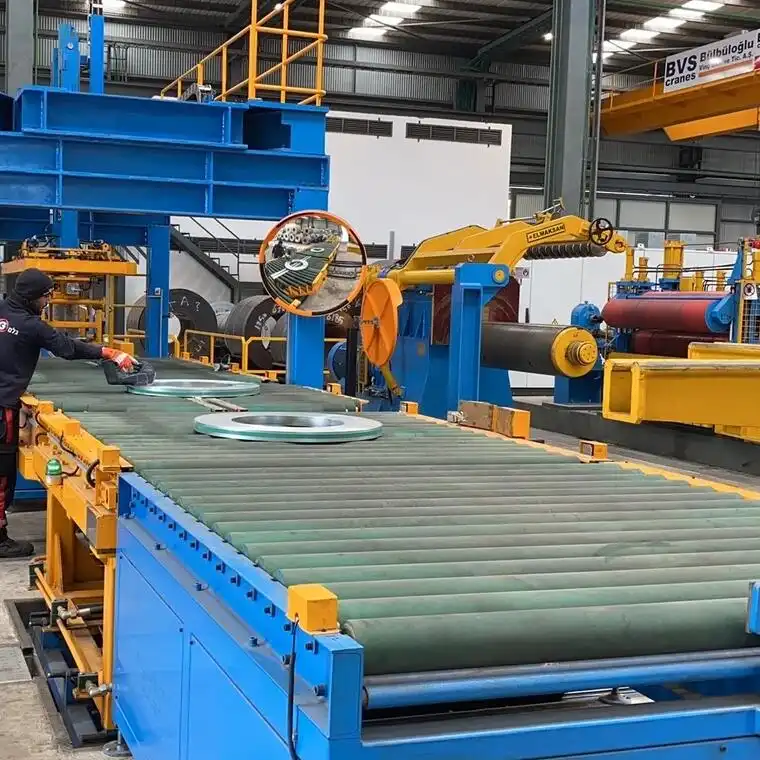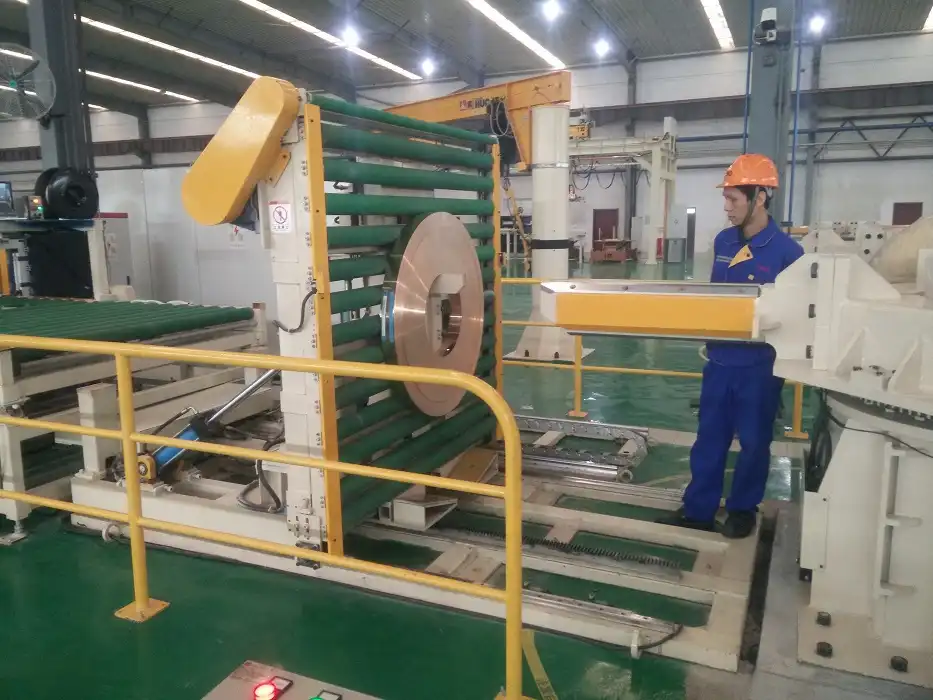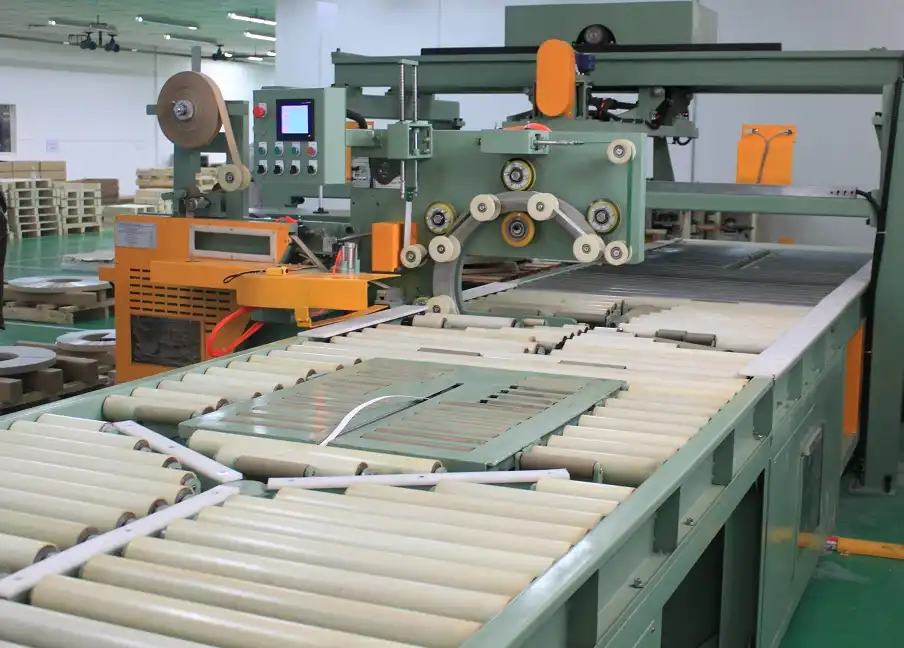Packing coils can be a complex task. But with the right equipment, like a coil packing machine, it becomes much more manageable. Let’s explore how this machine works and how it can save time, reduce costs, and improve packaging quality.
A coil packing machine automates the process of wrapping and securing coils for transport and storage. It minimizes human error, enhances efficiency, and ensures consistent, safe packaging. Here's how it works in simple steps.

Understanding the Core Components of Coil Packing Machines?
Imagine your coil wrapping machine working at full speed. It’s all thanks to its core components. But what are these components, and how do they make the packing process faster and more reliable? Let’s break them down.
A coil packing machine is made of several essential components, including the coil feeder, wrapping mechanism, and sealing system. These parts come together to ensure efficient and secure packaging.
Core Components of a Coil Packing Machine
The main components of a coil packing machine are the feeder, the wrapping mechanism, and the sealing system. Each part plays a crucial role in streamlining the packing process. The feeder ensures smooth coil entry into the machine. It controls the orientation and speed at which the coil enters the wrapping stage. The wrapping mechanism wraps the coil tightly with the desired material, ensuring stability and protection. Lastly, the sealing system locks the wrapped coil, preventing any unwinding during transit.
Table: Breakdown of the Core Components
| Component | Role in the Process |
|---|---|
| Coil Feeder | Controls coil entry, orientation, and speed |
| Wrapping Mechanism | Wraps the coil securely with packaging material |
| Sealing System | Ensures the wrapping stays in place |
These parts must work together smoothly to avoid delays and ensure the packaging is consistent every time. If even one component is not functioning properly, the entire process can be slowed down.
The Packing Process: From Coil to Finished Product?
A coil packing machine doesn't just wrap coils; it does so efficiently and consistently. Ever wondered how it goes from raw coil to finished packaged product? Let’s dive into the process.
From feeding the coil into the machine to securely wrapping it, the packing process involves several precise steps. The entire cycle takes only a few minutes, ensuring high productivity and minimal human intervention.

Steps in the Packing Process
The packing process begins with the coil being fed into the machine. The feeder positions the coil in place, ensuring it’s aligned for the wrapping stage. Once in position, the wrapping mechanism starts working. It wraps the coil with the preselected material, which could be plastic, stretch film, or another wrapping material, depending on the requirements. Finally, the sealing system locks the wrapping in place.
Key Stages in the Packing Process
- Coil Entry: The coil enters the machine and is positioned for wrapping.
- Wrapping: The machine wraps the coil with the chosen material.
- Sealing: The system seals the wrapped coil, ensuring it’s secure and ready for transport.
This process significantly reduces the need for manual labor, speeds up production times, and improves the consistency of each package.
Key Considerations for Efficient Coil Wrapping Operations?
Running a coil wrapping machine requires careful planning and attention. But how can you make sure your operations are as efficient as possible? There are key considerations to keep in mind when using this equipment.
To ensure your coil packing machine runs smoothly and efficiently, it’s important to maintain the machine, choose the right materials, and train your operators properly. Efficiency comes from the balance between machine maintenance, material choice, and operator experience.

Improving Efficiency in Coil Wrapping Operations
A well-maintained coil packing machine can deliver maximum efficiency, but maintenance isn’t the only factor. Let’s consider how material choice and operator training play vital roles in improving packing operations. Choosing the right packaging material helps optimize both the machine’s performance and the final product’s protection. Stretch film, for instance, is widely used in coil wrapping because it provides flexibility and a tight seal. Moreover, regular maintenance ensures your machine functions at peak performance, preventing unexpected downtimes.
Training and Material Choice for Maximum Efficiency
| Consideration | Importance |
|---|---|
| Operator Training | Ensures the machine is used effectively |
| Packaging Material | Affects the quality and stability of the wrapping |
| Regular Maintenance | Keeps the machine running smoothly |
Proper operator training ensures that the machine is used to its full potential. Without skilled operators, even the best machinery can be underutilized. Regular training, combined with ongoing maintenance, ensures long-term efficiency.
Conclusion
In conclusion, understanding the core components and efficient operation of a coil packing machine helps improve productivity and reduce costs. With the right tools and training, you can streamline your packaging process and ensure consistent, secure results every time.